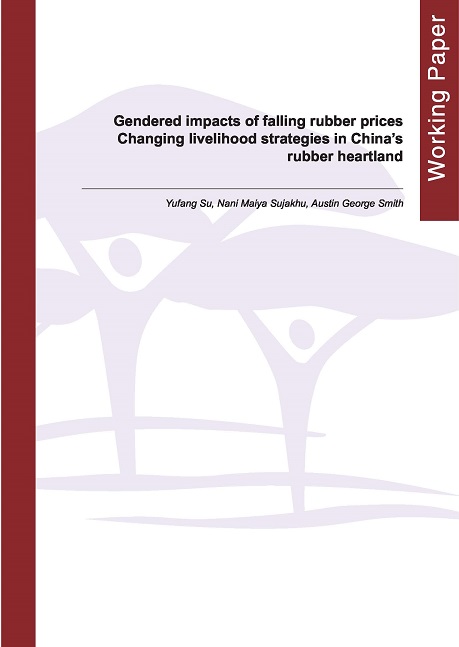Gendered impacts of falling rubber prices: Changing livelihood strategies in China's rubber hearltand
Abstract
Xishuangbanna Dai Autonomous Prefecture in Yunnan Province of China generates one-third of China’s total rubber production. Sharing a continuous border with Myanmar and Lao PDR, rubber production in the region is of paramount importance to local smallholders, regional interests, and global supply chains. The rubber industry has become an important economic driver for lifting rural farmers out of poverty and ensuring basic living standards in a historically underdeveloped area of the country. However, in 2011, global rubber prices began to steadily decline. A confluence of factors triggered this, from equilibrating market dynamics (increased supply, decreased demand), its growing multipurpose use as an agricultural crop, timber species for forestry, applications in other industrial products, and fluctuating risk in financial derivatives. Recent research has also revealed that natural rubber is highly vulnerable to an array of forces, such as nominal interest rates, Chinese CNY appreciation, speculation, discrepancies in access to information across different markets, as well as changes in synthetic rubber and oil prices. This complex trend has extended into the modern day with serious consequences for development in the region. In 2011, we visited 1014 households to conduct household surveys to learn more about land-use dynamics, assess potential impacts, and explore forms of good environmental governance to inform stakeholder understandings of regional drivers and dynamics. In 2020, we revisited 322 households from the 2011 study period to administer survey questionnaires and conduct focus-group sessions to investigate the impacts of falling rubber prices on local livelihoods and rubber production as well as farmer responses across Xishuangbanna, with a particular emphasis on gender-differentiated impacts. By analysing and comparing datasets from these two time periods, we found that rubber remains a primary source of income for locals, but both men and women have increased worry regarding livelihood strategies in the context of falling rubber prices and have been forced to seek out other sources of income, including planting more diverse cash crops and searching for work as off-farm labourers. Women generally bear a heavier workload while capturing a lower percentage of household income, and instead of spending disposable income on extra goods, people are once again focused on ensuring that essential living standards are first met. Conversely, men have greater vocational flexibility, dominating the migrant labour workforce largely because women have additional caretaking responsibilities at home and less available time. Women also generally work closer to home, which restricts their work opportunities, and they tend to obtain lower wages than men. Men usually have enhanced decision-making power in household farm enterprises and community leadership as they come into more frequent contact with the outside world, while women have expanded autonomy in conducting daily purchases. Thus, while the price plunge has been felt by all households in the area that rely on the rubber trade as a key source of income, it has particularly impacted the lives of women. This highlights the risks associated with farmer livelihoods that are dependent upon a global commodity with a highly volatile price. Policymakers at different levels and community leaders must fully consider gender-differentiated impacts of fluctuating market prices to heed and learn from the experiences of women in the area for better decision-making in the future.

